|
In this Issue...
- The work-life balance beam: Advice from someone who quit gymnastics at age seven
- NIAID releases past successful grants
- Cairns in the spotlight
- Meet your Bench-to-Bedside Lecture: Dr. Fiona Crawford, PhD
- Research spotlight
- Member opinions
- 2019 Outstanding Achievement Award: Dr. Robert T. Gerlai, PhD
- 2019 Elected Councilors
- 28th Annual IBNS Conference info and details
- Discount offered for IBNS members at the official IBNS Satellite AS4SAN Conference
- Pre- and Post-IBNS Conference Tours
The work-life balance beam: Advice from someone who quit gymnastics at age seven
Karen K. Szumlinski, PhD
Professor
[email protected]
Psychological and Brain Sciences
Molecular, Cellular Developmental Biology
University of California Santa Barbara
Santa Barbara, CA, USA
As a senior faculty member in the Department of Psychological and Brain Sciences (I still have a hard time considering myself as “senior”, although my aching back and constant need to touch up my gray hair reminds me otherwise), I’m often invited to participate in round-tables, workshops and career development panels regarding my decision to pursue an academic career. I love sharing my twisted academic journey with trainees of all levels (a topic for another time), but invariably, the conversation turns to how one manages to maintain a work-life balance with all of the pressures an academic life. Before I had children, I used to have all sorts of great answers to that question. “Plan date nights!” “Take the time to see a movie at least once a month!” “Have at least 1 evening a week when you don’t check email or go on your phone”. “Go out dancing at least once a week to burn off steam!” “Go to the gym every day!” Even when my children were infants and toddlers, I could offer helpful suggestions on how to maintain research and teaching productivity while working around their sleep/feeding/play schedules…
 Now that my darling children are hitting double-digits, I can’t help but laugh when somebody asks me how I maintain a work-life balance. I don’t laugh maliciously (I’m too nice a person for that!), but rather out of incredulousness (apparently, that’s a word because I’m not getting a red squiggly line). Throughout my academic journey, I’ve discovered what I consider to be many interesting scientific things. However, throughout my academic journey, I’ve also discovered that a work-life balance has morphed into a mystical creature that sparkles with the morning dew that can only be glimpsed from a distance and then is gone into the forest of life. Now, I don’t say this to be pessimistic or discouraging! Oh contraire….my children are the reason that I’m not six feet under a pile of journal articles right now trying to write 3 grants at once, while simultaneously grading exams and analyzing data from 14 undergraduates in the lab. My children are the reason why I can find the time to write an article such as this (although, they are also the reason why I submitted the article 3 days past the deadline!). My children have certainly forced me to view my work life with a new perspective and that has had an extremely positive influence on my overall well-being. That all being said, by no means is my life balanced – at least not on a daily basis, anyway. Now that my darling children are hitting double-digits, I can’t help but laugh when somebody asks me how I maintain a work-life balance. I don’t laugh maliciously (I’m too nice a person for that!), but rather out of incredulousness (apparently, that’s a word because I’m not getting a red squiggly line). Throughout my academic journey, I’ve discovered what I consider to be many interesting scientific things. However, throughout my academic journey, I’ve also discovered that a work-life balance has morphed into a mystical creature that sparkles with the morning dew that can only be glimpsed from a distance and then is gone into the forest of life. Now, I don’t say this to be pessimistic or discouraging! Oh contraire….my children are the reason that I’m not six feet under a pile of journal articles right now trying to write 3 grants at once, while simultaneously grading exams and analyzing data from 14 undergraduates in the lab. My children are the reason why I can find the time to write an article such as this (although, they are also the reason why I submitted the article 3 days past the deadline!). My children have certainly forced me to view my work life with a new perspective and that has had an extremely positive influence on my overall well-being. That all being said, by no means is my life balanced – at least not on a daily basis, anyway.
And therein lies the secret…if you are a dedicated scientist/instructor and a dedicated parent/caregiver, you have to recognize that balance is difficult to achieve on within-day basis. I would dearly love to be able to divide my waking hours in half and spend half my day working my brains out and half my day catering to my family. However, over these past few years, as my children have gotten older, their homework gets more burdensome and involved (there goes my chance to review that paper I promised I would review in a timely manner-I need to help them use a protractor to calculate a missing angle or think of 25 words that have the “er” sound). Their number of extra-curricular activities escalate (there goes analyzing that dataset over my morning cup of coffee- I need to make lunch 1.5 h earlier than normal today because Math Club starts at 7:20; there goes analyzing that dataset over my late afternoon cup of coffee- nobody else stepped up so I’m coaching soccer or basketball or softball until 6 or 7 pm). When my children are not busy with homework or extra-curricular activities, they want to have friends over and have fun (there goes writing that grant proposal or animal use protocol- nobody can think straight when there are a bunch of girls having a disco dance party in the middle of your house!). There are simply not enough hours in the day to maintain balance.
Couple the sad fact that there are not enough hours in the day with the other facts of academic life – your institutional responsibilities grow as you climb the academic ladder (yes! you seriously have 5 different committee meetings today on top of your 2-h lecture) and you age as you climb the academic ladder – routinely staying up all night to catch up on work is no longer a viable option. You must adopt a different strategy for maintaining some resemblance of a balance. This requires both planning and the recognition that you have limits as a living, breathing, human (the latter is still a hard one for me but I’m leaving my Wonder Woman bracelets in the drawer more frequently these days). If you can’t have balance within a day, then try to maintain balance between days. Put aside at least 1 day of the work-week when you are not lecturing or forced to attend a faculty meeting and keep it exclusively for your individual research pursuits (manuscript writing, data analysis and graphing, grant proposal writing etc.). No email until after 5 pm (if somebody really needs you desperately, they can call your phone). No meetings with faculty or students. No reviewing papers or grants. Just you and your sweet science uninterrupted. You will feel so accomplished by home time, thinking of words with the “er” sound becomes a game rather than a chore and a protractor will become the coolest invention of all time. On the home-front, try to have at least 1-2 late-afternoons/week when nobody is involved in extracurricular activities or play-dates at your house (or even better, send your kids to somebody else’s house for a few hours) and use that time to catch up on the manuscript reviews, dissertation editing and other “science or academic small stuff” that ended up on the back-burner during the work-day. Warning: if your children are at home, you must select these late-afternoon/evening academic pursuits carefully as you will invariably be interrupted by cries for snacks, homework help, missing Lego pieces, and kisses good-night. So, you won’t be able to write a grant, but you’ll be able to chip away at work and get some smaller items accomplished and you’ll rest easier at night.
For those big-ticket scientific items (e.g., a grant or that killer manuscript that has to be submitted before you write the grant), you really have to shift your balance in the direction of work when you are a caregiver. At least, that’s been my more recent experience. You won’t be available to calculate every angle or find every “er” word or hold 3 soccer practices/week. But, there are ways to lessen the burden on your family, which ultimately lessens the burden on you. Plan way ahead of a grant deadline and use your “days off for working” to focus exclusively on that big-ticket item. Take more “days off to work” during the week than you would normally. Alternatively, plan your grant-writing time for when your academic duties are relatively low. Then, you can have more time to focus at the office or you can just stay home and work in your pajamas after your kids head off to school. I recommend the start of a semester, exam week, the summer break (only works if your kids are at camp or visiting a relative), or during a conference as great times to get significant writing accomplished. Work on the smaller, administrative/rote, parts of the grant when you have less free time. Use incentives to entice a quieter than usual home. I find: “If you let Mommy work on her grant this week, we can go for sushi and see a movie this weekend” works wonders (my kids will do anything for sushi). I will be honest - I also let them watch much more TV and have more screen-time when I’m working on a big-ticket item to keep them out of my hair. We also tend to eat much more fast-food when it’s grant-writing time because you can’t type, baste a chicken and make cheese sauce for broccoli at the same time. Sometimes you gotta do what you gotta do! I’m not aware of any child who perceives more TV/screen-time or more fast food as a punishment and this approach has been a definite win-win at our house. It’s not like you are writing grants all year long! It’s a few days or weeks of deviation from the normal routine. Just warn your children not to get used to it!
Last advice: Ask for help. There are other people out there who might enjoy the company of your children nearly as much as you (or perhaps even more so when the grant deadline is in 3 days). Arrange play-dates and sleep-overs. Sign them up for day-camps on holiday weekends or school breaks. Other parents can kick a soccer ball too (even if they didn’t sign up to coach) so ask somebody else to take over a practice to give yourself a break to work – while folks might not fully understand the trials and tribulations of our chosen career, most will appreciate that you are freaking out because you are behind on important work and will step up. If nobody steps up - cancel a practice (trust me, the kids on the team will not mind skipping a practice here and there!). Ask your children to help themselves and each other. They can get their own snacks once in a while (just be sure they are in reach – don’t need anybody falling off a step-ladder). They can try to get themselves ready for bed on their own. Sure, they might miss a tooth or two while brushing their teeth, but such activities build self-esteem, independence and confidence and you can get them to brush more thoroughly the next morning. Your graduate students and post-doctoral trainees will benefit greatly from assisting with modifying or writing your human subjects or animal use protocols, delivering a lecture for you here or there, mentoring undergraduates on issues related to career-choices or whatever they feel like whining about today. Graduate students and post-doctoral trainees can also assist with the grant-writing process and help with peer-review. They’ve got the brains or else you would not have selected them to be in your lab – give them a chance to use those brains and give yourself a break.
The bottom-line for junior academics with young children or those considering starting a family, nearly all super heroes have an alter ego that is less than super. We should accept that of ourselves just as we accept the characters of comic books. You can’t be awesome at everything all the time and you can’t perfectly balance work and life, particularly with school-aged children. Instead, consider how you might best prioritize your time at work and time at home, how you might make time for work and time for home, so that you can be the best scientist and caregiver you can be. And if all else fails….there is sushi and TV!
Back to Top
NIAID releases past successful grants
Michael Kendig, Guest Editor
UNSW Sydney
Sydney, NSW, Australia
Early and mid-career IBNS members may be interested to see past examples of successful grants funded by the National Institute of Allergy and Infectious Diseases (NIAID). Sample applications from the R01, R03, R15, R21, SBIR/STTR, K, and F schemes are provided.
Resources are available at this link, with more provided for certain National Cancer Institute schemes in the comments.
Back to Top
May Newsletter vol 23-4 Guest Editors:
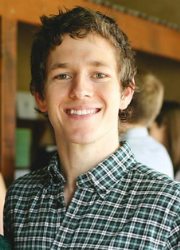
Dr. Michael Kendig, PhD
UNSW Sydney
Sydney, NSW, Australia
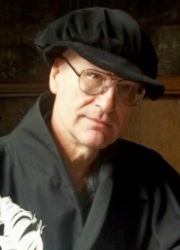
Prof. Donald McEachron, PhD
Drexel University
Philadelphia, PA, USA
Thank you, Mike and Donald!
Interested in serving as a Guest Editor for the IBNS News?
Email: [email protected]
Looking for a New Employment Opportunity or Struggling to Find the Right Candidate? Meet the IBNS Career Center!
One of the biggest challenges for any international scientific society is to provide quality and informative support to its members, whether it's for a new employment opportunity or finding the right candidate for a newly opened position. The IBNS online Career Center portal (http://jobs.ibnsconnect.org) provides the right tools for both job seekers and employers.

The IBNS Career Center portal offers all the standard operational features; such as a thorough search engine by keyword and location, as well as a free review of your resume for feedback, and a job-posting service for employers. However, what makes the IBNS Career Center stand out in terms of support is two additional quality features: resources for job seekers & access to a resume bank for employers.

In the Resources section, you have access to a number of articles with valuable tips in building a resume, job seeking, and communication. These tips come from experienced scientists in the field -- not only for searching or applying for a position, but also for the interview process. Interested in 'building your brand’ or strengthening your social media presence? You will find plenty of advice and tips to do so, which will help strengthen your image and move your career to the direction you want!
In the Resume Bank, potential employers have free access to a large bank of resumes and profiles. You can customize the filters that apply to your search and create lists of candidates that fulfill your own criteria.
Back to Top
Cairns in the spotlight
Michael Kendig, PhD, Guest Editor, with help from Md. Mustahsan Billa
UNSW Sydney
Sydney, NSW, Australia
With only a month until the 28th IBNS Annual Meeting, you might be interested in learning about this year’s host city ‘down under’, Cairns.
Cairns is a coastal city on Australia’s north-east coast with 145,000 inhabitants. Founded in the late 1800s on the land of the Yirrganydji people amidst the Queensland gold rush, Cairns became a key hub for exporting regional produce (sugar cane, pineapples, gold, and others). The city has grown steadily and today is known primarily as a tourist destination – Australia’s fourth most popular!
Renowned for its tropical climate, IBNS delegates can expect balmy temperatures between 22oC (72oF) and 28oC (83oF) dropping off a little overnight, with low rainfall.
The appeal of the city for tourists lies in its proximity to the Great Barrier Reef – which, sadly, may not be around for much longer – and tropical rainforest inland.
So, what to do in between sessions and after a hard day of science?
Have a dip in the public pool at Cairns Esplanade. This is a popular meeting point for locals and tourists to relax over a ‘Barbie’ (BBQ) and enjoy the water. The nearby Cairns night markets run 365 days per year and offer a range of local souvenirs. And for anyone staying through the weekend, the Farm Gate Markets showcase local produce from 7:30am - 2pm every Saturday at the Marina.
History buffs can check out the city’s tropical history at the Cairns Museum (10am - 4pm, Monday-Saturday).
These are all less than a 15-min walk from where we’ll be at the Cairns Convention Centre.
If you have a little more time, the Cairns Botanic Gardens showcase the region’s dazzling tropical plant life – it’s a ~20-minute trip on the 131 bus from Spence St. in the CBD (approx. 3 miles away).
The Kuranda Scenic Railway begins at Cairns central station (within Cairns central shopping centre) and is a ~2.5hr journey up to Kuranda village via Barron Falls, providing beautiful views of the rainforest and surrounding waterfalls.
For complete immersion into the surrounding heritage-listed tropical rainforest, the Skyrail Rainforest Cableway is a 15-minute drive north of Cairns - best to schedule a half-day for the full experience.
Cairns also has many beautiful bushwalks amongst the surrounding mountains – though many begin a short ways out of the city. This link has some great options (and pictures!). The adventurous types may wish to venture north to Palm Cove beach (30 minutes drive) or further afield to the stunning Millaa Millaa Waterfall.
And it would be remiss not to mention the Great Barrier Reef, a UNESCO World Heritage Site and one of the Seven Natural Wonders of the World. Many half- or one-day tours operate via Green Island. With coral bleaching steadily eating away at this incredible ecosystem, it may be worth a trip if you have time available.
Enjoy!
Back to Top
Meet your Bench-to-Bedside Lecture: Dr. Fiona Crawford, PhD
Eve Van Wagner, Business and Events Manager
IBNS Central Office
We are delighted to announce your 2019 Bench-to-Bedside Lecture...
Fiona Crawford Ph.D.
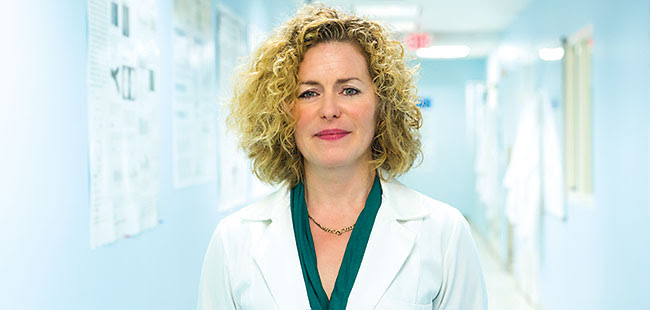
President and CEO, Roskamp Institute; Principal Investigator, James A. Haley Veterans’ Hospital; CTO, Archer Pharmaceuticals; CEO, SRQ Bio.
Educational Background: B.S. Honors in Biochemistry and Genetics, Queen’s University of Belfast, Northern Ireland; Ph.D. in Medical Genetics, University of London, England
Research Interests: Dr. Fiona Crawford’s Ph.D. research was carried out at St. Mary’s Hospital Medical School, London. Together with the Alzheimer’s research group, she contributed to the identification of two mutations in the β-amyloid precursor protein (ßAPP) gene which cause early onset Alzheimer’s disease, discoveries which led to two publications in Nature (Goate et. al., 1991; Chartier-Harlin et. al., 1991). Her discovery of a third Alzheimer’s causing mutation, the so-called “Swedish” mutation, together with her colleague Dr. Michael Mullan (Mullan et. al., Nature Genetics, 1992), led to the development of the first valid mouse models of Alzheimer’s Disease. Following completion of her Ph.D. research in 1992 she moved to the University of South Florida, where she was the Associate Director of the Roskamp Laboratories, which subsequently was established as the Roskamp Institute for research into psychiatric disorders. By 2003, she held an endowed chair at USF and was Associate Professor in three departments. However, the Roskamp Institute relocated that year to a stand-alone facility in Sarasota and Dr. Crawford accepted the position of Associate Director, becoming the President in 2013. Through her appointment with the James A. Haley Veterans’ Hospital she has pursued collaborative research projects including studies of Alcoholism, Traumatic Brain Injury (TBI) and Post Traumatic Stress Disorder (PTSD). Through extensive preclinical and clinical research, the Roskamp Institute drug discovery program and spin-off Archer Pharmaceuticals has advanced the compound Nilvadipine into a Phase III clinical trial for Alzheimer’s Disease in Europe (currently ongoing). Given the known risk for Alzheimer’s Disease conferred by head injury, in parallel with her Alzheimer’s projects her research has evolved to target brain cellular mechanisms following TBI. In a Neurology paper her work with the Defense and Veteran’s Head Injury Program showed that APOE genotype influences recovery after TBI (Crawford et al., Neurology, 2002) and prompted her subsequent use of APOE transgenic mice to model the human differential response to TBI (Crawford et al., J Neurotrauma, 2012). She has also led the development of a novel mouse model of mild TBI (Mouzon et al., J Neurotrauma, 2012; Mouzon et. al., Annals of Neurology, 2013), and uses such good laboratory models of human conditions to identify novel therapeutic approaches. She is utilizing state-of-the-art proteomic and lipidomic technology to identify peripheral biomarkers and molecular targets in TBI and other complex conditions of relevance to the military, such as PTSD and Gulf War Illness, and she is the Director of Militarily Relevant Research at the Roskamp Institute. She is funded by the Veterans Administration, National Institutes of Health and the Department of Defense. She is also the CEO of SRQ Bio, the Institute’s spin out for-profit contract research organization, and Program Director for the novel 3-year, laboratory focused, Ph.D. program at the Roskamp Institute.
Back to Top

Research spotlight
Michael Kendig, PhD, Guest Editor
UNSW Sydney
Sydney, NSW, Australia
- Featuring: Thomas Arkell, PhD Student
The University of Sydney
Sydney, NSW, Australia
- Featuring: Anne-Noël Samaha, PhD
Associate Professor
Department of Pharmacology and Physiology
University of Montreal, QC, Canada
Mike Kendig: The increasing push to decriminalise recreational and medicinal cannabis use in many countries has prompted questions about its safe and effective use. Particular attention has focused on road safety, given evidence that acute cannabis intoxication impairs driving ability. Yet there is also growing recognition that cannabis strains vary enormously in the ratio of delta-tetrahydrocannabinol (THC, the primary psychoactive component of cannabis) to its non-intoxicating counterpart, cannabidiol (CBD). Following anecdotal evidence that CBD may smooth the adverse effects of THC, researchers based at the Lambert Initiative for Cannabinoid Therapeutics at The University of Sydney sought to test whether CBD-containing cannabis would affect driving performance – measured in a simulator – relative to cannabis containing only THC. This research, led by PhD Student Thomas Arkell and overseen by Professor Iain McGregor, was just published in Psychopharmacology. I spoke with Thomas about the implications for his results.
MK: Thomas, this is exciting work – congratulations on the publication! In your protocol, participants vaporised 125 mg of cannabis that contained either equal parts THC and CBD, THC only, or placebo. I was curious about the choice of overall dose and ratio of THC to CBD - how might these compare to what a casual cannabis user might take on a day-to-day basis?

Thomas Arkell: Thanks, Michael. We chose a THC dose that would product consistent effects in occasional cannabis users without being overly impairing. Most participants reported that this was a similar dose to what they would normally use. A very regular user might have found this dose to be relatively mild. We chose a cannabis variety with a 1:1 ratio of THC to CBD for a number of reasons. Not only is this often thought to be an ideal ratio between the two compounds, but this is closest to what we expect a medical cannabis patient might be using. Nabiximols (Sativex), a prescription cannabis extract, also contains a 1:1 ratio of THC to CBD.
MK: The use of a within-subjects design provided you with good power to detect differential effects of your cannabis types. Did the lack of differences on driving ability between CBD-containing and non-containing cannabis types surprise you?
TA: There hasn’t been any research to date looking at the differential effects of high and low CBD cannabis on driving, so we didn’t necessarily expect to see differences in terms of driving performance. We did, however, expect that CBD would reduce the psychoactive effects of THC on some of our measures. What we found though was in fact the opposite – CBD seemed to actually increase the impairing effects of THC on some measures.
MK: A noteworthy finding was that CBD-containing cannabis conferred no protection against driving impairments. Why do you think this might this be the case?
TA: Well, one possibility is that CBD simply doesn’t reduce the impairing effects of THC, at least with respect to driving! Of course, we only looked at a 1:1 ratio here and a relatively low dose of CBD (13.75 mg). Medical cannabis patients can be taking hundreds of mg of CBD a day, typically orally and in the form of cannabis extracts or purified CBD. We may well see different results with much higher CBD to THC ratios (e.g. 20:1). We might also see different results with regular or more tolerant users who tend to be less susceptible to the impairing effects of THC.
MK: Your self-report measures found no differences between the two cannabis subtypes on measures of anxiety, driving confidence, liking or perceived strength of the cannabis, and, er, how ‘stoned’ participants felt. I wondered if there were other anecdotes you may have heard from participants about how they felt on the two drugs? Was there anything that participants could distinguish in the CBD-containing cannabis?
TA: Interestingly, most participants reported that the two cannabis types did feel different, but for the most part they were unable to describe exactly what these differences were. Some did say that they felt clear headed and better able to focus with the THC/CBD cannabis than with the THC-dominant cannabis, which is consistent with anecdotal reports. There are, however, hundreds of compounds in the cannabis plant that likely play some role in fine-tuning the subtle effects of different cannabis strains, and CBD is only one of them. Myrcene, for example, is a terpene commonly found in cannabis which is reported to have sedative effects. These other factors may be just as important as the ratio of THC to CBD.
MK: One result that stood out to me was that driving performance remained impaired 3.5h after vaporising either form of cannabis, when their cognitive function and self-reported drug sensations were normalised. This surely has alarming implications for cannabis users?
TA: This result stood out to me too. It’s important for cannabis users to recognise that the impairing effects of cannabis may still remain even when they no longer feel high. Interestingly, participants were generally aware of their driving impairment at 3.5 h, and their confidence in their driving ability was considerably lower here than it was at baseline or in the placebo condition at this time. This suggests that cannabis users might actually be quite good at judging their own driving impairment. The opposite is true for alcohol!
MK: I also wondered about poly-drug use – I wondered if m/any studies have compared cannabis use to alcohol on driving test outcomes, and/or explored their interactive effects?
TA: Yes, there have been a number of studies to compare the effects of alcohol and cannabis on driving. Some of the early cannabis and driving work done by Hindrik Robbe at Maastricht University found that cannabis (100-300 ug/kg THC) had only a modest effect on driving by itself, but quite severe effects when combined with alcohol. A more recent study by Rebecca Hartman and colleagues found very similar results, and the authors noted that the combined effects of cannabis and alcohol were additive rather than synergistic. This is an important finding given that the two drugs are frequently used together.
MK: And finally, what’s next for this exciting research?
TA: We have just recently started recruiting participants for a follow-up study to this one at Maastricht University in the Netherlands with Professor Jan Ramaekers. This time we will be taking participants out on the road and measuring real-world driving performance over a 100 km stretch of highway. We will also have a CBD only condition. So, stay tuned!
MK: Thanks so much, and see you at IBNS?
TA: I am currently in the Netherlands working on this follow up study so I won’t be there unfortunately!
Reference:
Arkell, T. R., Lintzeris, N., Kevin, R. C., Ramaekers, J. G., Vandrey, R., Irwin, C., Haber, P. S., & McGregor, I. S. (2019). Cannabidiol (CBD) content in vaporized cannabis does not prevent tetrahydrocannabinol (THC)-induced impairment of driving and cognition. Psychopharmacology, 1-12.
Back to Top
Back to Research Spotlight
 Anne-Noël Samaha: As a University student, I was studying to be a film maker, as I always loved filmmaking and photography (I still do). Life happened, and I ended up studying Psychology at the Centre for Studies in Behavioral Neurobiology at Concordia University instead (Montreal, Canada). There I worked with Jane Stewart on the behavioural neuroscience of psychostimulant drug addiction. I was having a great time analyzing rat behaviour and learning about the brain. I decided to keep going and pursue a PhD with Terry Robinson at the University of Michigan (Ann Arbor, USA). There I led projects on how the temporal pattern of cocaine or nicotine delivery influences the drugs’ effects on brain and behaviour. We developed a neat model where I would inject rats with cocaine or nicotine intravenously, and some rats would get rapid injections, others would get slightly slower injections. It turned out changing the speed of drug delivery by just a few tens of seconds has large effects on outcome. This intrigued me tremendously, and it shaped my research programme as a PI at the University of Montreal. More on this below. Anne-Noël Samaha: As a University student, I was studying to be a film maker, as I always loved filmmaking and photography (I still do). Life happened, and I ended up studying Psychology at the Centre for Studies in Behavioral Neurobiology at Concordia University instead (Montreal, Canada). There I worked with Jane Stewart on the behavioural neuroscience of psychostimulant drug addiction. I was having a great time analyzing rat behaviour and learning about the brain. I decided to keep going and pursue a PhD with Terry Robinson at the University of Michigan (Ann Arbor, USA). There I led projects on how the temporal pattern of cocaine or nicotine delivery influences the drugs’ effects on brain and behaviour. We developed a neat model where I would inject rats with cocaine or nicotine intravenously, and some rats would get rapid injections, others would get slightly slower injections. It turned out changing the speed of drug delivery by just a few tens of seconds has large effects on outcome. This intrigued me tremendously, and it shaped my research programme as a PI at the University of Montreal. More on this below.
The second decisive influence on my research programme came from a post-doctoral fellowship with Shitij Kapur at the Centre for Addiction and Mental Health (Toronto, Canada). There I learned about schizophrenia, antipsychotic medications, and the long-term effects these medications can have within the brain’s dopamine system. A very important effect I started studying back then was the phenomenon of ‘antipsychotic-induced dopamine supersensitivity’. This dopamine supersensitivity can potentially promote tolerance to anti-psychotic efficacy, trigger psychosis, and also increase sensitivity to drugs of abuse. Needless to say, it deserves research and clinical attention.
I joined the Faculty at the University of Montreal in 2008. Since then, my students and I have been leading research on two fronts. First, inspired by many findings, including Terry and I’s early work on the speed of drug delivery, my lab is using animal models to examine the influence of another pharmacokinetic variable on the addiction process; the intermittency of drug use. Using intravenous cocaine and nicotine self-administration procedures in rats, we are determining how the intermittency of use influences the neurobehavioural impact of these drugs. Our work — along with findings from the Roberts, Robinson and Aston-Jones labs — suggests that in predicting addiction, how you take the drug can be more important than how much (reviewed in Kawa et al., 2019). This has the potential to fundamentally change animal models used to study behavioural features of addiction. I am truly excited to continue developing this work. A second long-standing project in my lab concerns the effects of chronic antipsychotic drug exposure on dopamine function and dopamine-dependent behaviours. Our findings are relevant both for understanding the long-term effects of antipsychotics on brain, psychology and behaviour and for informing evidence-based antipsychotic treatment strategies for people with schizophrenia-related disorders (reviewed in Servonnet and Samaha, 2019).
In parallel to this motivating science, I like to watch my children grow, hang out and debate with my husband, run, read, eat, travel and watch movies.
References: Kawa AB, Allain F, Robinson TE and Samaha AN. (2019) The transition to cocaine addiction: the importance of pharmacokinetics for preclinical models. Psychopharm (ePub)
Servonnet A and Samaha AN. (2019) Antipsychotic-evoked dopamine supersensitivity. Neuropharm (in press).
Back to Top
Back to Research Spotlight
Member Opinions
Lara Livia Munique Machado
Veterinarian and MSc. Behavioral Science
University of New Brunswick, Canada
[email protected]
 My name is Lara Machado. I am a veterinarian and a MSc. in behavioral neuroscience with a focus on Behavior and Cognition, from Brazil. My last work and recent publish was an article entitle “Behavioral and physiological changes in drugs detection dogs under influence of stress.” My name is Lara Machado. I am a veterinarian and a MSc. in behavioral neuroscience with a focus on Behavior and Cognition, from Brazil. My last work and recent publish was an article entitle “Behavioral and physiological changes in drugs detection dogs under influence of stress.”
This particular research improves the way of federal polices can use animal sources and obtain better results in tasks forces without prejudice dog’s well-being.
I have been worked with animal behavior for 9 years. And one thing what caught me in study animal science behavior is how, what and why we can learn with animal science, since many of inventions and technological innovations is inspired by something apparently simple: animals and their abilities.
The other thing that I realized during my career observing and treating animal behavior was how much we find from human behavior in domestics animals. That behavior had imprinted in dogs behavior, just watching humans for long time. However, which is the benefits and losses? And how this relationship changes dog’s behavior and mind, in terms of evolution?
It is true that human beings have a lot of benefits from animals, but to ensure that dogs also benefit from this relationship, it is still necessary to know how animals evolve in the psychological and cognitive aspect. And, in the same way, get more positive results for the both sides of this relationship. For instance, this approach can predict how the brain of alert dogs for diseases works, and how they learn this kind of behavior (once we know that alerts behavior is not taught to them).
After that little explanation of my thought and work, I express my intentions as an animal cognitive and behavior scientist. At the time, I am living in California, USA and I am improving my english skills to be able in pursue my international career as neuroscientist and researcher. Furthermore, I’m preparing myself to apply for my PhD in the end of this year. My interests are behavioral neuroscience, animal cognition, social behavior and well-being.
I really hope that my results can impact and contribute with well-being, the balance in life between this interesting interspecies relationship, and innovative approaches.
2019 Outstanding Achievement Award: Dr. Robert T. Gerlai, PhD
Dr. Robert T. Gerlai, PhD
University of Toronto Mississauga
Mississauga, ON, Canada
Robert T. Gerlai was born in Hungary and earned his Ph.D. in biology with specializations in animal behaviour and genetics from the Eötvös Loránd University and the Hungarian Academy of Sciences in 1989. He has held numerous academic (University of Hawaii; University of Toronto Mississauga) and industrial positions (Genentech; Eli Lilly; Saegis) and is currently professor of psychology at the Department of Psychology at the University of Toronto Mississauga. Dr. Gerlai is a prolific and accomplished scientist and researcher with well over 200 publications with an h-index of 51 and over 10,000 citations (Web of Science). Dr. Gerlai is currently using the Zebra fish as a model system to study the inter-relationships of genes and behaviour using forward genetics. A past president (2007-2009) and Fellow of the IBNS Dr. Gerlai has held numerous positions at IBNS over the years.
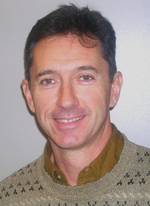 Every country has its own customs and habits. Where I am originally from (Hungary) we were expected to praise others, not ourselves. Thus, it is a bit awkward for me to write about myself and how my career led to this wonderful recognition, the Outstanding Achievement Award from the International Behavioral Neuroscience Society. But because students, and even colleagues, have been asking me, I have decided to do it. I’ll frame the question not as a detailed autobiographical account, but rather as a critical view, a form of advice for those aspiring to become a successful scientist. Every country has its own customs and habits. Where I am originally from (Hungary) we were expected to praise others, not ourselves. Thus, it is a bit awkward for me to write about myself and how my career led to this wonderful recognition, the Outstanding Achievement Award from the International Behavioral Neuroscience Society. But because students, and even colleagues, have been asking me, I have decided to do it. I’ll frame the question not as a detailed autobiographical account, but rather as a critical view, a form of advice for those aspiring to become a successful scientist.
Let me start first with a fundamental point. What is success? Number of publications? Number of times one’s own papers have been cited? Grants? Patents? Money? Funding agencies, promotion committees, interviewers all use such metrics to evaluate how good we, scientists, are. However, to me, success is something different. Success is harmony. When you enjoy your work, and make students and colleagues around you enjoy it too, that is success. It is a commonplace, so it is true: the journey is the most important thing, not how far you get at the end of it. Thus, my main point is this: choose a career path and a research topic that you love. For me, it was animals, their behavior, and the biological bases of behavior. This is actually the exact temporal succession of how my interests grew from my early childhood, through adolescence and eventually to my university years and beyond. It sounds conceited but it is true: I always knew what I wanted. So, when I discovered that there is a scientific society called IBNS, I was delighted to join.
My first IBNS meeting was in Cancun Mexico, in 1996. I gave two talks. One was a critical review of the interpretive problems surrounding gene targeting in neuroscience (the famous knock out technology), the other was an example on how one can use behavioral neuroscience approaches to discover the function of single genes. I immediately felt home at the meeting. I learned about research that normally I would not have considered reading. The meeting thus broadened my horizon. I also learned that conferences are not just about sitting in a lecture room, but also about having fun, exploring new places and making new friends, and this meeting indeed struck the right balance between science and fun. In fact, all subsequent IBNS meetings turned out like that, and believe me, I have attended many of them during the past 20+ years. In brief, IBNS became my home society. The meetings allowed me to network, to bounce ideas back and forth, to obtain a quick view of where the field was heading, and to have fun, a lot of fun.
But how did I get to where I am, a full professor of behavioral neuroscience at a world class university (University of Toronto). Well, the road was not a straight-line, to say the least. Although my research interest and broadly defined goals were always clear to me, life has thrown a number of curve balls at me, almost every step on my way. From a little-known country like Hungary to Canada and then the US and then back to Canada, I have had jobs in Academia as well as the biotech and biopharmaceutical research industries. At every place, I thought it would be my final destination. But money dried out, companies got reorganized, departments got shut down. I had no choice, if I wanted to stay within the field of behavioral neuroscience, I had to find a new job. Was it difficult? Yes, it was. I had to walk away from often fairly successful research, leave excellent colleagues behind, and start from scratch all over again. But at every place, I have learned something new, and I also realized that the gene pool is the same in Academia and Industry: I worked with dedicated scientists trying to make a difference in both places. Nevertheless, I always knew my heart was in academia. I enjoy academic freedom. When a job offer came from University of Toronto, I was delighted to accept it and left my leadership position in biotech and pharma behind. I love academic work-life. Working with enthusiastic young students, and watching them grow and become independent scholars is one of the most rewarding experiences I have had. It is fun to make discoveries, but it is even more fun to do it together with young minds.
Is it for everyone? Maybe not. We all have different talents, likes and dislikes. My best advice for you is to be honest with yourself and find out what it is that makes YOU happy. Where YOUR harmony is at work, and in life too. Mine at work is basic research studying the mechanisms of complex behaviors. To achieve this, I use a simple vertebrate, the zebrafish, challenging and pioneering work that also has long-term translational relevance. Does the IBNS Outstanding Achievement Award mean I have reached the goal I set out with this research for myself? Absolutely not. I feel I’m just beginning.
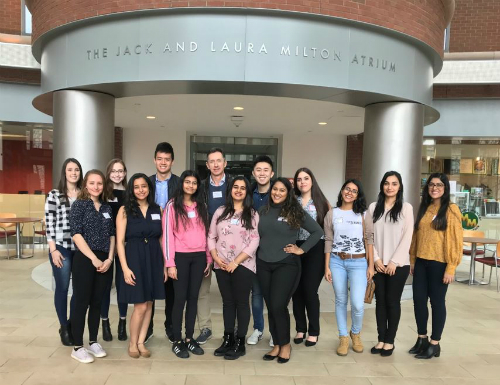 Dr. Gerlai with his undergraduate and graduate students at a recent zebrafish conference Dr. Gerlai with his undergraduate and graduate students at a recent zebrafish conference
Back to Top
2019 Elected Councilors
USA Councilor: Debra Bangasser
European Councilor: Markus Wöhr
Canadian Councilor: Stan Floresco
Student Councilor: Samantha Mahabir
Thank you to all the candidates and members
that participated in this important process!
Back to Top
28th Annual IBNS Conference info and details
Save the date for this must-attend event! June 23 - 27, 2018, the 28th Annual IBNS Meeting is in Cairns, Australia.
Local Printing:
Kwik Copy Printing Cairns
Owners: Carla, Ben and Sami Odell
Telephone: 07 4031 6066
Fax: 07 4031 2783
Sami Odell: 0437 234 928
Ben Odell: 0407 951 169
Email: [email protected]
Website: www.cairns.kwikkopy.com.au
Quote: 1 x Synthetic Poster 1219 x 914mm = $89+GST
Turnaround time: Art supplied in the AM will be ready to collect in the PM, Art supplied in the PM will be ready in the AM.
Accepted formats: PDF
Sending files: Email is good, if the file is too large there is a 'send file' link on the website
Copy Shop
Telephone: 07 4015 1515
Fax: 07 4031 5143
Email: [email protected]
Website: www.copyshop.com.au
Quote: 48" x 36” (or A0) conference pricing is $40 AUS. Posters are printed on 170gsm uncoated stock. Laminating is available also at $22 AUS.
Accepted formats: PDF and JPG are usually best as PPT can vary between different versions of the program.
Turnaround time: Free delivery to the convention centre is also available if required.
Traveling to Australia:
Each participant is responsible for determining the visa/passport requirements for their own travel. Please be aware that Australia requires either a Visa or ETA (Electronic Travel Authority) from all countries.
An Electronic Travel Authority (ETA) provides authorization to travel to and enter Australia and is electronically linked to your passport. It is for short term stays for tourism or business visitor activities such as attending a conference. See https://www.eta.homeaffairs.gov.au/ETAS3/etas for details. The current cost is $20 AUD (approximately $14 USD) and can be easily applied for online.
IBNS has partnered with American Airlines for 5% discount on published fares for travel from the USA to Australia!* Contact the American Airlines Meeting Services Desk at 1-800-433-1790 for assistance with reservations and ticket purchase OR book online at www.aa.com for AA/AE flights only. For the IBNS discount, use the Authorization Code 6169GC.

*Valid for June 14-30 travel dates

(preliminary schedule)


Be sure to keep checking the IBNS 2019 meeting page for frequent updates.
Don't forget to stay connected with us through #IBNS, #IBNSconnect and #IBNS2019!
Back to Top
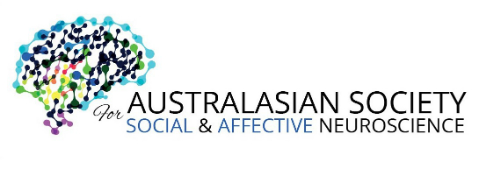
Are you coming to IBNS in Cairns, Australia? Add a few extra days to visit the exciting and official IBNS Satellite AS4SAN Conference (Australian Society for Social & Affective Neuroscience). The meeting at the University of Newcastle will run from June 17 - 19, 2019, with workshops and presentations on research relevant to social and affective neuroscience.
AS4SAN is a not-for-profit society that brings together clinicians and researchers to discuss how our brains process social and affective information. Social neuroscience is an exciting new research field and attracts researchers interested in everything from genetics, behaviour, psychophysiology, brain structure and function through to clinical disorders (such as dementia, autism and schizophrenia) and their treatment.
This year's keynote speakers will feature our very own IBNS President, F. Scott Hall (University of Toldedo) and Australian experts Drs. Belinda Craig (UNE) and Izelle Labuschagne (ACU).
A discounted rate will apply to IBNS attendees, so please join us!
Back to Top
Pre- and Post-IBNS Conference Tours
What's on your bucket list? Here's an opportunity for great experiences and perhaps scratch off 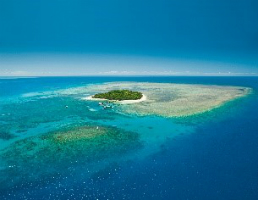 some of those bucket list items! some of those bucket list items!
There's something for everyone!
What: Local Tours discounted for IBNS delegates
What: Five (5) Day Pre-Conference Tour
Where: Sydney, Brisbane / Gold Coast
What: Post-Conference Tour
Where: Auckland and surrounds
SEE MORE INFORMATION >>
|